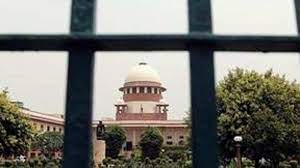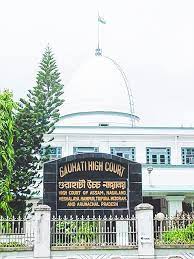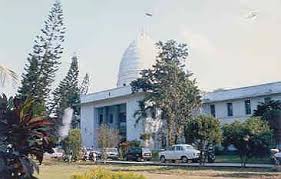The sole appellant herein was tried along with another accused for the murder of one Samsher Singh and convicted under Section 302 read with Section 34 of the Indian Penal Code, 1860 for murder and sentenced to rigorous imprisonment for life by the Trial Court (Para 1)
Apart from the above referred contradiction, yet another fact about the extra-judicial confession on 17.04.2004 is noteworthy. The statement of the accused Sumit Gupta (A-2) in his Section 313 CrPC statement is that they were arrested on 11.04.2004 itself and not 17.04.2004. This statement gets corroborated by the deposition of Rajesh (PW-11), who stated that; “Thereafter I read news in newspaper regarding murder on 12.04.2004. On 12.04.2004 I read in the newspaper regarding murder at Kaithal in the surrounding area in which I was changing the stepney. On 13.04.2004 in the morning, I was going to Chandigarh through Kaithal and I saw a police vehicle standing on Karnal by pass Chowk in the area of Kaithal. I saw police inspector along with 4/5 police officials and saw the same accused along with police. Then I stopped and told the police regarding occurrence on 10.04.2004. Police recorded my statement on the spot.” If the statement of PW-11 is to be accepted, which the prosecution wants us to believe, then the arrest had already taken place by 13.04.2004 and therefore the accused were seen in the presence of the police on that day. If this is true, then there is no doubt in our mind that the extra judicial confession on 17.04.2004 is false and unbelievable. The evidence of this witness that is PW-11 is strongly relied on by the prosecution. In fact, the Trial Court as well as the High Court proceeded on the basis of this witness’s statement to convict and sentence the Appellant. This is perhaps the reason why the High Court did not consider it appropriate to rely on the evidence of PW-10 and proceeded to confirm conviction and sentence on the basis of other evidence. There are some other aspects which Mr. Mullick has relied on to cast a doubt about evidence of PW-10 but we are of the opinion that the above referred factors are sufficient to reject the version of PW-10. (Para 17)
PW-11 – His evidence is relied on by the Trial Court as well as the High Court. He is admittedly a chance witness. In fact, he chances the episode twice over, first on 10.04.2004 at about 10.30 PM when he was going from Chandigarh to Hisar. His version is that at about 1.5 kilometres near Karnal bypass, his car tyre got punctured and when he was putting the stepney, he saw four people on motorcycle armed with dandas. He noticed blood stain on the deceased’s pant and also records the registration number of the motorcycle. Secondly, he again chances the police party standing with the accused on his way back to Chandigarh. He stops and gets the incidence of 10.04.2004 recorded by the Police. (Para 18)
This witness is completely unreliable. It is his own statement that he started from Chandigarh at 6 PM on 10.04.2004. The distance between Chandigarh and the place of occurrence is about 120 kilometres and takes about 2 hours to cover the distance even by car. There is no explanation as to how he took more than four hours to reach the scene of offence. This uncertainty is compounded when he admits his ignorance about the person in whose name the car is registered. Further, upon being questioned about where he stayed in Chandigarh the night of 09.04.2004, his answer is simply that he does not remember the name of the lodge. He could not even remember the shops near by the lodge. It is rather surprising that this witness while engrossed in changing the wheel of his car at 10.30 PM manages to note the blood stains on the pant and also recorded the registration number of the motorcycle. There is nothing to indicate that he had a pen or a paper to readily note the registration number. His statement is to be contrasted with the version of Ram Kumar IO (PW-24) who stated that “I did not see any arrangement of the light on the Karnal bypass road especially the alleged place where the car of Rajesh Kumar got punctured and he saw the accused while riding the motorcycle. It is correct that there is no light arrangement on the place of occurrence because it is an agriculture area.” We are not at all impressed with the evidence of PW-11. There are too many coincidences in his version and his story is improbable in the context of the facts and circumstances of the case. He is certainly an unreliable witness. (Para 19)
As per the statement of PW-12, he went on an evening walk between 9.45 to 10 PM, two Kilometres away from his house, particularly in an area which does not have streetlights. The multitasking of urinating, coughing, seeing the motorcycle, noting the blood stains clothes and recording the registration number happens simultaneously. There is no evidence as to the manner in which he had recorded the registration number. He is said to have studied only up to 6th class. How could he notice and also memorise the registration number having seen it from a long distance. He himself says the motorcycle was at a distance. His version is highly improbable. (Para 21)
This witness says that the blood stained trouser and dandas in the hands of the accused caused suspicion and therefore, he recorded the number. However, that did not compel him to go to the police station. Instead, he reports the incident only on the 12.04.2004, that is two days later. Strangely, instead of reporting the incident to the police chowki which is next to his residence, he goes all the way to Sadar Police Station, Kaithal. We are of the opinion that the evidence of PW-12 does not inspire confidence at all. (Para 22)
Apart from the improbable and contradictory versions of the three witnesses, Mr. Mullick has also brought to our notice that the weapons recovered by the IO and the ones seen by the witnesses are only sticks. However, the deceased has suffered an incise wound which according to the doctor, PW-14 who conducted the post-mortem, is caused by a sharp-edged weapon. The prosecution has not recovered any sharp-edged weapon. In fact, there is no mention about a sharp-edged weapon at all. (Para 25)
There is a yawning gap between the charge against the Appellant and the evidence that the prosecution has adduced. The circumstances do not establish the guilt of the Appellant at all. While the principle applicable to circumstantial evidence requires that the facts must be consistent with the hypothesis of the guilt of the accused, in the present case the evidence adduced gives rise to doubts, improbabilities and inconsistencies. (Para 29)
Having considered the matter in detail and having noted the various discrepancies and improbabilities, we are of the firm view that the prosecution has not established its case beyond reasonable doubt. The Appellant is entitled to be acquitted. (Para 30)
SUPREME COURT OF INDIA
2024 STPL(Web) 21 SC
[2024 INSC 21]
Pradeep Kumar Vs. State Of Haryana
Criminal Appeal No. 1338 OF 2010-Decided on 05-01-2024.
https://stpllaw.in/wp-content/uploads/2024/01/2024-STPLWeb-21-SC.pdf







